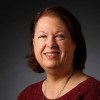‘Color Purple’ shows poignant power at The Smith Center






A timely show for the #MeToo era. And a timeless one for those who follow the gospel of #LessIsMore.
The national tour of the Tony-winning “Color Purple” revival — at The Smith Center through Sunday — ably illustrates how a director’s vision can transform a musical, heightening its emotional impact by not trying too hard to make one.
The director in this case is John Doyle, the Scottish-born Tony winner known for his stripped-down, laser-focus approach. In the process, he’s deconstructed — and transformed — everything from Stephen Sondheim’s “Sweeney Todd,” set in Victorian-era London, to “The Color Purple,” which transports audiences to rural Georgia in the first half of the 20th century.
Despite dissimilar locales, both shows share the same real setting: the rocky territory of the human heart.
The first time “The Color Purple” hit Broadway (and, later, The Smith Center, becoming the very first musical to play Reynolds Hall in 2012), it had the great-works padding befitting an adaptation of Alice Walker’s Pulitzer Prize-winning 1982 best-seller and Stephen Spielberg-directed 1985 movie adaptation.
This time around, however, Doyle looks past the pedigree, allowing the characters — and the performers embodying them — to shoulder the story’s dramatic weight.
It still has the same heart-wrenching story (Pulitzer-winning “ ’night, Mother” playwright Marsha Norman adapted Walker’s novel) and the same rousing, gospel-meets-blues score (by pop and R&B veterans Brenda Russell, Allee Willis and Stephen Bray).
This time around, though, those elements are front and center, positioned for maximum punch.
Doyle designed the show’s simple yet artful setting — rough wooden backdrops that, with the use of a few judicious props, serve as the walls of a humble home, the bars of a jail, a deep-in-the-woods juke joint, even the landscape of faraway Africa.
The wooden chairs hanging from the backdrop invite audiences to pull up a (figurative) chair and set a spell, allowing “The Color Purple” to cast its own spell.
The tale’s unlikely protagonist: the downtrodden Celie (Adrianna Hicks, ably conveying the character’s inner strength along with her frequent desperation).
When we first meet Celie, the teenager has borne, and had to give up, two children — fathered by the man she presumes is her father. Her sole solace: her studious sister Nettie (N’Jameh Camara), the one person who loves Celie unreservedly.
All too soon, Nettie’s gone, too, escaping the man Celie’s forced to marry: the hateful Mister (Gavin Gregory, capturing the wounds beneath Mister’s cruel bluster), who continues Celie’s life of endless servitude. And delivers endless reminders that she’s “poor, black and ugly” — and trapped.
Fortunately, Celie has two sisters in arms: the force-of-nature Sofia (dynamic Carrie Compere, reprising her Broadway role), whose response to routine domestic violence (“Why you so scared, I never know, but if a man raise his hand, hell no!”) elicits audience cheers; and voluptuous singer Shug Avery (the sassy Carla R. Stewart), Mister’s longtime flame, who may be an object of lust and desire but knows all too well that life in a gilded cage is still life in a cage.
Watching these women seek — and, ultimately, find — their redemption, discovering it comes from within, gives “The Color Purple” an undeniably poignant power that’s all the more potent because of its restraint.
Contact Carol Cling at ccling@reviewjournal.com or 702-383-0272. Follow @CarolSCling on Twitter.













